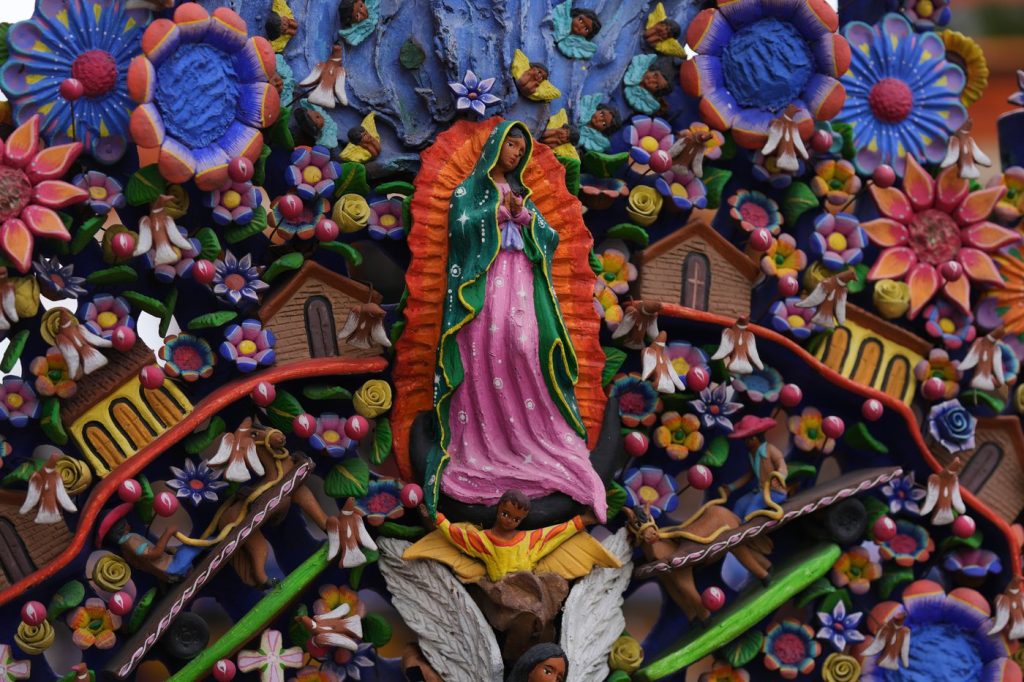METEPEC, Mexico – Mexican craftsman Hilario Hernández experienced an extraordinary moment when he met Pope Benedict XVI. Rather than being a guest at the Vatican, he traveled as the guardian of a fragile ceramic piece—a Tree of Life—that he had created as a gift for the pope. Hernández remarked, "No one really planned to take me along. But a Tree of Life can easily break, so I got the chance to bring it myself."
The custom-made Tree of Life, commissioned in 2008, reflects the rich tradition of Mexican craftsmanship. This art form blossomed in the mid-20th century and signifies cultural identity in Hernández’s hometown, Metepec, located approximately 40 miles (65 kilometers) southwest of Mexico City. In Metepec, numerous artisans are dedicated to crafting Trees of Life, with designs that often depict the biblical scene of Genesis featuring Adam and Eve, separated by the tree's trunk and accompanied by a coiled snake.
Carolina Ramírez, a guide at Metepec’s Clay Museum, expressed the pride of artisans in their work: "The tree allows you to express whatever you want. It’s a source of pride for us, as it has become part of the town’s identity and charm." The museum also hosts an annual contest, showcasing over 300 pieces and displaying a permanent collection of various interpretations of the Tree of Life.
Besides the iconic figures of Adam and Eve, Trees of Life are adorned with imagery like Catrinas, skeletal figures synonymous with Mexico's Day of the Dead celebrations, and Xoloitzcuintles, sacred hairless dogs of the Nahua people. Ramírez emphasized that these trees draw from cultural and traditional themes, making them a source of identity for those who purchase them.
The Hernández family has deep roots in pottery, with Hilario's grandfather, now aged 103, still crafting pots. "We’re the fifth generation of potters and artisans," stated Felipe, one of Hilario's siblings. Despite being trained in technical careers, the brothers unanimously chose to pursue their family's craft full-time, with Hilario mentoring them. Tasks are shared, each brother contributing to various aspects of the creation process, instilling a strong sense of pride in their artisan legacy.
Hilario's dedication to his craft was evident when creating a Tree of Life for Pope Benedict. He engaged his father’s ancestral technique to ensure the piece was properly fired and overcame logistical challenges by wrapping the delicate sculpture in over 200 rolls of toilet paper to protect it during transportation. The intricate design, which took six months to complete, depicted revered Mexican saints on one side and the story of Metepec's Tree of Life on the other.
The history of the Tree of Life may date back to the 16th century, playing a significant role in the evangelization process after the Spanish Conquest. As per Ramírez, the first modern artisans reinvented the trees, incorporating unique elements such as the Tlanchana—an emblematic figure of a half-woman, half-serpent who, legend has it, once ruled the waters near Metepec. In current interpretations, the snake tail has been replaced, transforming her image into that of a mermaid, thus aligning more closely with Catholic symbolism.
Hilario’s passion for his craft was further reaffirmed when he met Pope Francis in 2016 after creating another Tree of Life, this time symbolizing the pope’s life. Hilario dedicated three months to this project, researching religious themes to accurately reflect Francis's journey. The encounter left a lasting impression, prompting Hilario to reflect on his purpose. "Making Trees of Life is a commitment," he affirmed. "It’s how we make a living, but it’s also how we keep our culture alive."










